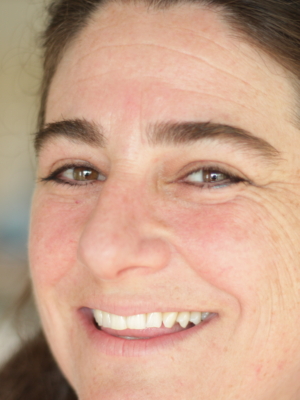Politics and Art
I have never considered myself a political person or political artist until I started painting on subjects that others could relate to. The word “politics,” according to Oxford dictionary, is described first as the activities associated with the governance of a country or other area, especially the debate or conflict among individuals or parties having or hoping to achieve power. It is described second as the academic study of government and the state. I do not fit into either of these definitions and I did not study world history or political science. I would describe myself as an overeducated dyslexic artist and as a teacher with endless credentials—with degrees from the best art school and Ivy League institution in the country. And yes, I am still paying for my education!
Nevertheless, I have been practicing my freedom to express my personal experiences as an American woman in my culture since I was a student at Pratt Institute back in 1988. Decades later, it has not made me rich or famous, being a woman artist in a world that revolves mainly around male artists in galleries and museums, but it has allowed me to share my thoughts widely through my work as I see the world change, and my viewers get to see my work in publications, themed exhibitions, and literary forums.
The meaning of the word “freedom,” in the Merriam-Webster dictionary, is the state of being free from the control or power of another. I believe I am free in the United States of America to express what I think about my position and role as a woman; and not only as a woman, but as a mother, as an educator, and as an artist, too. The right of every American citizen, regardless of one’s occupation and without judgment of one’s personal choices, is to be able to ask questions and demand answers from our politicians who are supposed to be working for the majority. It is your birthright if you are born in this country. Here in the USA, I think our opinions and votes count. I do believe the system works when it comes to freedom of speech.
Some may call me a feminist, or a feminist painter, for these views. I try to stay away from being labeled because of the topics I choose to paint. For example, my series on women’s rights or equal voting rights doesn’t make me a feminist painter. Though I am not insulted by the thought of being a feminist, I just do not want to be cornered in a box where, again, it may take away from my existence and take away from being considered fully human. Being defined by gender is not fair and it can be limiting in a place where people are easily conformed to biases.
In many countries, women activists who stand up for their political views, who fight for women’s rights and for social justice, express it through writing, protesting, journalism, collaborations, and art. They are punished severely; arrested and humiliated publicly for challenging the norms of their own cultures. They disappear, get beaten, or are killed, even though they are leaders in grassroots movements and have shifted government policies.
Tactics like that are used to scare other social and political activists; to control them and conform women and men to their country’s unjust regulations, usually not in favor of the indigenous people of the country. For instance, in Brazil, indigenous activist Paulo Guajajara was killed by loggers in the Amazon. They did not like Paulo’s protesting, so they just eliminated him and went on with business as usual. The government does not want natives to be the heroes which they are—saving the land, fighting for environmental justice, working against climate change, protecting women from abuse, and exposing governments putting immigrant children into detention camps. The government prefers them to be SILENT. Currently, Scott Warren was acquitted of charges for leaving bottles of water, food, and providing shelter for undocumented men trying to cross the border of Mexico into the USA at the Arizona border. A true humanitarian. He was lucky to be American, some may say, and to escape a twenty-year term of incarceration. I was able to illustrate on the topic in a recent column collaboration that will run up to the elections, called “Turning Purple,” with writer Leigh Hopkins. This brings me much closer to the subjects I am illustrating about.
If you are a political artist, these are the current events, though very hard to swallow. For a journalist or writer, it is great material, it is inspirational, and it gets me fired up for making a painting! I share stories, giving them a visual voice, and exposing the events to the world. Here in the States, I am safe to express myself as a woman. I feel responsible to take full advantage of that freedom and to express it in my artwork.
When I went to find a meaning for the words “political art,” Wikipedia described it as a strong relationship between the arts and politics, particularly between various kinds of art and power, [occurring] across historical epochs and cultures. As the artists respond to contemporaneous events and politics, the art sake on political as well as social dimensions, they themselves become a focus of controversy and even a force of political as well as social change.
For many years, I struggled with my identity as an artist—not fitting in with the painters, nor the illustrators, nor the comic artists. I remember one day walking through the Metropolitan Museum of Art on 5th Avenue—you know, where Trump said, “I could stand in the middle of 5th Avenue and shoot somebody and I wouldn’t lose any voters.” I was with my grandmother; at the time she was ninety-plus years old. We stopped to look at a Rothko painting and she said to me, “This, to me, is not art.” I could not argue with her that this is a famous abstract expressionist artist and that a lot goes into the idea of color, light, and shapes. Esther was not having it. She said she could not understand it or what the artist was saying to the audience, and she was an artist. My grandmother was actually one of the first women to be accepted to Cooper Union Art College, in the East Village in NYC, which was an all-male college before the ’30s. The college trained her to paint lampshades. I guess they thought, in the 1930s, that that was a good job opportunity for females. Her family sent her there instead of getting married, even though she came from a religious family and that is what women were destined to be, housewives. Esther did end up getting married; not once, but twice. Her second marriage was to a Polish Jewish immigrant, my grandfather, whose family was executed by the Nazis in Warsaw. He immigrated first in 1914 around WWI, straight to Borough Park, Brooklyn, in a very Jewish religious sector of the city. He came with his first wife and three children. Sadly, his wife and infant child were hit by a car and killed a few blocks away from the Temple, right in front of the whole family to see. It was tragic, leaving him depressed and to raise two other children on his own. None of his siblings thought America was better than Poland and they did not come over to join him, even though he had bought a plane ticket for his little sister. Not one Polish family member survived WWII from what I have been told. They were all executed for being of Jewish faith. My grandmother, who was considered an old maid at thirty-five and a first generation American, was set up to marry him. They had my mother a few years later and another son by the end of the war. That was a generation that understood the value of working hard and being in America, escaping the Holocaust and having religious freedom. Her first marriage was short—her family made my grandmother divorce him after they found out he was beating on her and that he was an alcoholic. Art saved my grandmother through her conflicted life and she committed herself to painting freely ’til the day she died. I noticed as a young child that painting was a priority for her, or maybe it was a need. My grandmother was a huge influence in my life, and my mother was an interior designer who was also very involved in her career. A family of women artists.
Another influence and obsession for me is the daily news. I am fascinated with newspapers, always! It has given me endless material to paint; mostly, I am concentrating on human behavior or self-governance in a free society. Sometimes, I find I have to take a break from making images and telling stories for others. I am personally affected by each and every painting I make. Whether the painting is about an individual, a socially unjust situation, animal abuse, or, my biggest concern, climate change, I am feeling it personally.
I had a friend who asked me, “Why do you pick such gloomy topics to paint? Can’t you paint something pretty like the beautiful colors you are using?” Huh? I couldn’t understand why she asked that, and I had to laugh. Another time, my painting “Baby New Years Plastic World” served as the opening piece to an exhibition of art about environmental pollution in California. The painting is a watercolor of a baby sleeping peacefully on a beach polluted with endless plastic garbage. The baby’s abdomen and ribcage are open, exposing a stomach filled with plastic bits, bottlecaps, toys, and other single-use plastic items bought for convenient consumption. There was a Barbie doll head I painted in this image, cut off from its body and with messy hair, dangling off the baby’s insides—maybe not great to see if your favorite plastic toy is Barbie. I was inspired by the image from a photograph I saw going around online of albatross bird carcasses, their bellies opened exposing loads of random plastic pieces inside their stomachs. Scientists studying how plastic pollution travels to the north Pacific Ocean, far from where humans live, found that birds mistake plastic pieces for food as the plastic breaks down over time and as plastic bags mimic seaweed as it floats in the water. This kills the birds as they ingest too much of this plastic waste.
I watched a mother with her young daughter visiting the art show and, closing in on my painting, she got horrified! She literally covered her daughter’s eyes and shuffled her kid past my piece. At first, I was somewhat offended, but then I thought about it and realized that this image achieves something powerful. It gets the message out without saying a word. This image can spark an emotion that could lead to personal or social change. It could be looked at as a political statement. The painting “Baby New Years Plastic World” has been getting a lot of attention and it has been used for magazines, book covers, and posters, internationally and in universities, on the topic of plastic pollution and its effects on people and the environment.
I am convinced that political art can evoke social change. I want to share my artist statement
here which I attach with submissions and open art calls:
“I am inspired to paint out of the need to tell a story or record a period of time others may choose not to recognize. My topics of interest are often personal, involving my role and struggles as a woman in American culture. My political paintings touch topics such as equal rights, women’s rights, gender identity, war, environmental catastrophes, current events, and the impacts of plastic pollution on the environment. I aim to educate my audience through the use of a visual narrative. Through painting I found a voice to talk about human behavior and to find beauty in the face of decay of the planet. I am hoping to bring awareness to the world and to create positive social change.”
We are coming to the end of the decade entering 2020, also the year we will be celebrating the one-hundredth anniversary of the suffrage movement, of women who fought to protect women’s right to vote. Since then, women’s rights are still under attack. Currently, we are fighting to get our abortion rights back in many states, we are still having the women’s marches, we are addressing the #metoo rape culture and healthcare rights, and we are demanding equal pay for ALL women.
I ask myself, How can this still be happening? And, How can I make sure this does not continue onto the next generations?
Should I stop painting political art and hide, or maybe I should start making pretty pictures?
I will end by quoting Elizabeth Cady Stanton, one of the many, many women leaders of the suffrage movement, who said in August 1920: “The right [to vote] is ours. Have it, we must. Use it, we will.”
Get out there in the world, speak your mind, gather in large groups, and vote!
Do the right thing!
Dara Herman Zierlein is a political artist and is continuously using her art to advocate awareness in the world. Her paintings are of current issues focusing on social justice, animal rights, women, equal rights, and plastic pollution. Dara’s large watercolor paintings have been exhibited & published internationally in Mom Egg Review, Resist Vol. 2, Grab Back (NYC), 1 Million Women (Australia), The Earth Issue (London), and Demeter Press (Canada). She is also illustrating regularly for The Rumpus, a literary forum. Her political posters are frequently used in universities like Golden West College, California; Mass College of Art, Boston; Whitworth University, Washington State; and other educational institutes. Recently, Dara was on the cover of the Valley Advocate for an article called “Purging Plastic,” and as the Spotlight artist on Lunch Ticket with Antioch University in LA. Her first children’s book is being published with Green Writers Press, called Don’t Eat the Plastic. Visit her website at motherstime.blogspot.com
Photo Credit: Roberto Mighty





